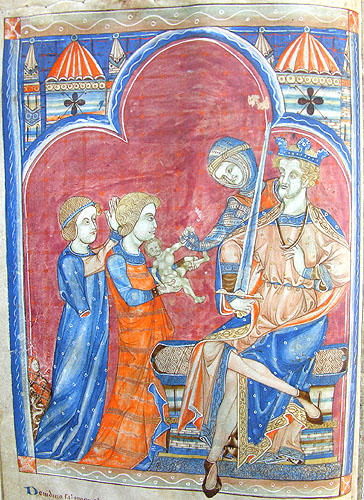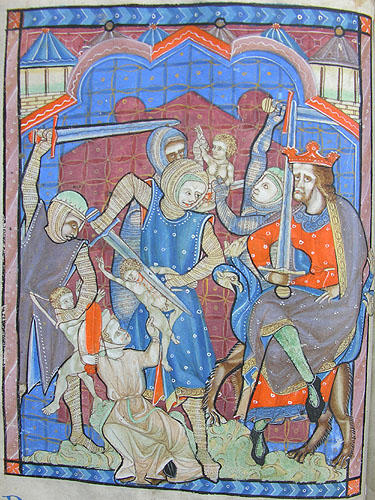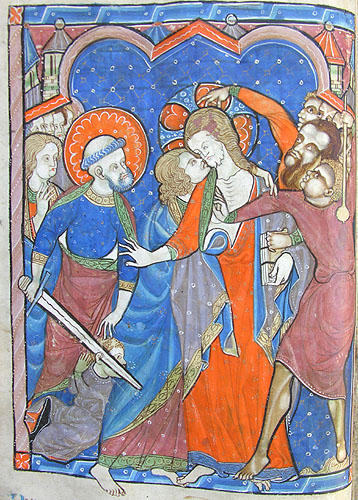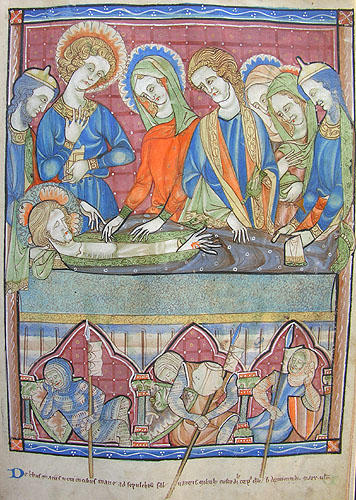
Create an Amazon Wedding Registry
Illustrations from
St John's College, Psalter K.26 c.1270-80
 12. Abraham and Melchisedech, from f.8v Three men in mail (as Trinity Apocalypse, covering the head); Abraham is the foremost one, he bows. Melchisedech comes from R.: he wears a foliated crown and a single robe, long and blue, and a white scarf passing round his neck which holds three loaves and a jug depends from it. De uictoria abrahe contra iiiior reges et de occursu melchisedech offerens ei panem et uinum. Ge. xiiii. |
 16. The judgement of Solomon, from f.10v Dead child on the ground in graveclothes. Two women face R. The second holds a nude living child. Its hand is caught by a mailed soldier who stands behind. Solomon cross-legged holding upright sword, foliated crown, L. hand in string round neck, slight beard. He is on a cushioned seat. Below this picture are three couplets De iudicio salomonis duarum meretricum de infante diuidendo iii. Reg. iii. |
 26. The Massacre of the Innocents, from f.15v Four mailed soldiers (faces as in Trinity Apocalypse), three children, one mother, holding broad leaf-like object, scarlet (a clothes-bat). Herod on throne which has hairy legs, cross-legged, sword in hand, red crown. De nece paruulorum innocentum. Mt. ii. |
 32. The Betrayal, from f.18v Crowd. Peter with sword cuts off ear of Malchus. Judas kissing Christ, book in hand. Crowd, four men, one smites with mace. De amputacione auricule malchi. Mt. xxvi. Marc. xiiii. Luc. xxi. Joh. xviii. |
 33. The Flagellation, from f.19r Man in close cap with whip. Christ. Man bareheaded, with bundle of rods. |
 37. The Entombment of Christ, from f.21r Four mailed men with pennoned lances sleeping in three arches of the tomb. Man in cap at the head, another at the feet. Five figures on the other side of the tomb: John, the Virgin? in red, a man without nimb, with vase, two nimbed women. The Body in a purple robe with green border. De tribus mariis uenientibus mane ad sepulchrum saluatoris militibus custodientibus corpus Ihesu sed dormientibus. Marc. ult. The title and picture here do not agree. |